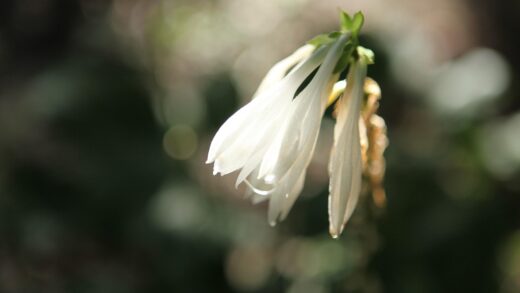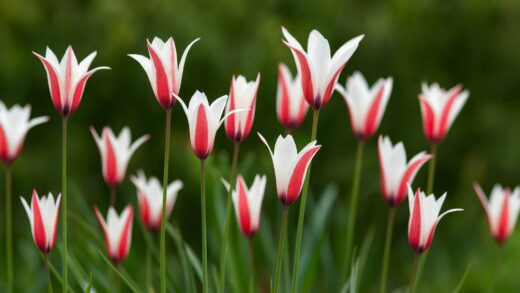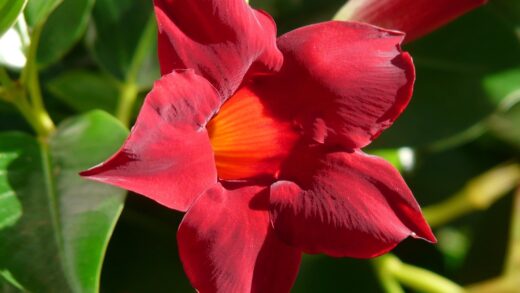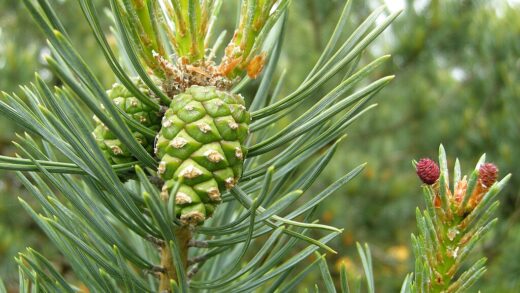Understanding the precise water requirements of Algerian ivy is fundamental to its cultivation, as improper irrigation is one of the most common reasons for its failure to thrive. This plant prefers a state of consistent moisture at its roots but is critically intolerant of waterlogged soil, which can rapidly lead to fatal root rot. The art of watering this ivy lies in achieving a delicate balance: providing enough hydration to support its lush, vigorous growth without saturating the soil to the point of suffocation. Therefore, developing a mindful and responsive watering routine is more important than adhering to a rigid, predetermined schedule.
The frequency and volume of water your Algerian ivy needs will fluctuate based on a variety of environmental factors. The amount of light it receives, the ambient temperature and humidity, the size and type of its container, and the time of year all play a significant role in how quickly the soil dries out. An ivy growing in a warm, sunny location during the summer will require far more frequent watering than one situated in a cool, shaded spot during the winter. Learning to read the cues from both the plant and its soil is the mark of a skilled gardener.
Signs of both overwatering and underwatering can initially appear similar, often manifesting as wilting or yellowing leaves, which can be confusing for the inexperienced grower. However, a closer inspection of the soil provides the definitive answer. Consistently soggy soil points to overwatering, while soil that is dry and pulling away from the sides of the pot indicates a need for more moisture. Proper irrigation techniques, such as watering thoroughly and allowing for adequate drainage, are essential for preventing these common issues.
This article will provide a detailed exploration of the water needs of Algerian ivy, offering professional guidance on how to irrigate it effectively. We will cover how to determine when to water, the best methods for application, the importance of humidity, and how to recognize and correct common watering mistakes. By mastering these principles, you will be well-equipped to provide your Algerian ivy with the optimal level of hydration it needs to flourish and maintain its stunning appearance.
Determining when to water
The most reliable way to determine if your Algerian ivy needs water is to physically check the condition of the soil. Instead of watering on a fixed schedule, make it a habit to assess the soil’s moisture level every few days. The most common and effective method is the finger test: insert your index finger about one to two inches deep into the soil. If the soil feels dry at that depth, it is time to water. If it still feels moist, it is best to wait and check again in a day or two to avoid the risk of overwatering.
More articles on this topic
For those who prefer a more technological approach, a soil moisture meter can be a useful tool. These inexpensive devices are inserted into the soil and provide a reading of the moisture level on a simple scale, typically from dry to moist to wet. This can take the guesswork out of watering and is particularly helpful for larger pots where it might be difficult to judge the moisture level in the center of the root ball. Aim to water when the meter indicates that the soil is in the dry to slightly moist range.
Observing the plant itself can also provide clues, although these are often signs that the plant is already experiencing some level of stress. An underwatered ivy may have leaves that appear slightly wilted, limp, or dull in color, and the leaf edges may start to turn brown and crispy. Conversely, an overwatered ivy might also wilt, but its leaves will often turn yellow and fall off easily, and the base of the stems may become soft and mushy. Relying on soil checks is a more proactive approach that prevents the plant from reaching these stages of stress.
The weight of the pot can be another indicator for experienced growers. A pot with dry soil will feel significantly lighter than one with well-watered soil. After watering your plant thoroughly, lift the pot to get a sense of its maximum weight. Over time, you will be able to gauge when it needs water simply by lifting it and noticing how light it has become. This method works best for small to medium-sized pots that are easy to handle.
Proper watering techniques
When it is time to water your Algerian ivy, the goal is to moisten the entire root ball thoroughly and evenly. The best way to achieve this is to apply water slowly and gently to the soil surface until it begins to run out of the drainage holes at the bottom of the pot. This ensures that water has penetrated the full depth of the soil, reaching all the roots, rather than just wetting the top layer. Discard any excess water that collects in the saucer beneath the pot to ensure the plant is not left sitting in standing water.
More articles on this topic
Using lukewarm or room temperature water is preferable to using very cold water. Cold water can shock the plant’s root system, which can inhibit its ability to absorb water and nutrients effectively. Allowing your tap water to sit out for a few hours before using it can help it reach room temperature and also allows some of the chlorine, which can be present in municipal water supplies, to dissipate. However, Algerian ivy is generally not overly sensitive to the quality of tap water.
Bottom watering is another excellent technique, especially for preventing water from sitting on the leaves and for ensuring deep hydration. To do this, place the pot in a sink or basin filled with a few inches of water. The soil will absorb water up through the drainage holes via capillary action. Let the plant sit for about 15 to 30 minutes, or until you can feel that the top surface of the soil is moist. This method encourages deeper root growth and ensures the entire root system is hydrated.
Regardless of the method you choose, avoid splashing water directly onto the foliage whenever possible. While a gentle rinse can be good for cleaning the leaves, consistently wet foliage can create a favorable environment for fungal diseases like powdery mildew or leaf spot. Always aim to water the soil, not the plant itself. Good air circulation around the plant will also help the leaves dry quickly if they do get wet.
The role of humidity
While proper soil irrigation is crucial, the ambient humidity also plays a significant role in the overall health and hydration of your Algerian ivy. This plant is native to humid environments and thrives when the relative humidity is between 40% and 60%. In many homes, especially during winter when heating systems are running, the air can become much drier than this, which can cause stress to the plant and lead to problems like brown, crispy leaf edges.
You can take several simple steps to increase the humidity in the immediate vicinity of your plant. Regular misting of the leaves with a spray bottle can provide a temporary boost in humidity, but its effects are short-lived. For a more consistent solution, consider placing a small room humidifier near your ivy. This is one of the most effective ways to maintain an ideal humidity level, benefiting not only your ivy but many other common houseplants as well.
Creating a microclimate by grouping several plants together is another effective strategy. As plants transpire, they release moisture into the air. When clustered together, this collective transpiration raises the humidity in their immediate surroundings. This not only benefits the Algerian ivy but all the plants in the group, creating a more symbiotic and supportive environment that more closely resembles their natural habitats.
The pebble tray method, mentioned earlier, is a classic and reliable way to increase local humidity. By placing the pot on a tray of water-filled pebbles, you create a constant source of evaporation around the base of the plant. This passive system requires minimal maintenance—just remember to top up the water in the tray as it evaporates. This simple setup can make a significant difference in keeping your ivy’s foliage lush and healthy, particularly in dry indoor conditions.
Adjusting for seasonal changes
The water needs of your Algerian ivy will change significantly with the seasons, and adjusting your irrigation practices accordingly is essential for its year-round health. During the spring and summer, the plant is in its active growth phase, characterized by longer daylight hours and warmer temperatures. During this time, it will be photosynthesizing more actively and transpiring more rapidly, leading to a greater demand for water. You will need to monitor the soil more frequently and will likely find yourself watering at least once a week.
As autumn approaches and the days become shorter and cooler, the plant’s growth will naturally begin to slow down. It will enter a semi-dormant state for the winter months, requiring significantly less water and nutrients. It is crucial to reduce your watering frequency during this period. Allow the soil to dry out more thoroughly between waterings than you would in the summer. Overwatering during the winter is a very common mistake and is a primary cause of root rot when the plant’s metabolic processes are slow.
Indoor plants are also affected by the seasonal changes in their environment, particularly the dry air caused by central heating in the winter. While you will be watering the soil less frequently, you may need to increase your efforts to provide adequate humidity to counteract the dry conditions. Monitor the leaves for signs of dryness, such as brown tips, and implement humidity-boosting measures like misting or using a humidifier as needed to keep the foliage healthy.
When spring arrives again, and you begin to see signs of new growth, you can gradually start to increase your watering frequency back to its summer level. The emergence of new, tender leaves is a clear signal that the plant is coming out of dormancy and its demand for water is rising. This cyclical adjustment of your watering routine, in tune with the plant’s natural growth cycle, is a cornerstone of successful Algerian ivy care.
Diagnosing watering problems
Recognizing the signs of watering problems early is key to correcting them before they cause serious damage to your Algerian ivy. Overwatering is the more dangerous of the two issues. Its symptoms include yellowing leaves (especially older, lower leaves), wilting of the entire plant despite the soil being wet, and a soft, mushy stem base. If you suspect overwatering, you should immediately stop watering and allow the soil to dry out. In severe cases, you may need to repot the plant into fresh, dry soil after trimming away any brown, mushy, rotten roots.
Underwatering, while less likely to be fatal in the short term, will still cause stress and affect the plant’s appearance. The most common signs are wilting leaves that feel dry and brittle, brown and crispy leaf edges or tips, and slow or stunted growth. The soil will be visibly dry and may have pulled away from the sides of the pot. Fortunately, the remedy is straightforward: give the plant a thorough watering. For severely dehydrated plants, soaking the entire pot in a basin of water for 30-60 minutes can help to fully rehydrate the root ball.
Leaf drop can be a symptom of both overwatering and underwatering, so it is essential to check the soil to determine the cause. If leaves are yellowing before they drop and the soil is damp, overwatering is the likely culprit. If the leaves are becoming dry and crispy before falling and the soil is bone dry, the plant needs more water. Consistent and appropriate watering is the best way to prevent leaf drop related to moisture stress.
It is also important to ensure that poor drainage is not the root cause of what appears to be an overwatering problem. If your pot does not have adequate drainage holes, or if the saucer is not emptied after watering, the soil can become waterlogged even with infrequent irrigation. Always use pots with drainage holes and never let your Algerian ivy sit in standing water. Correcting these foundational issues is essential for establishing a healthy watering routine.


















